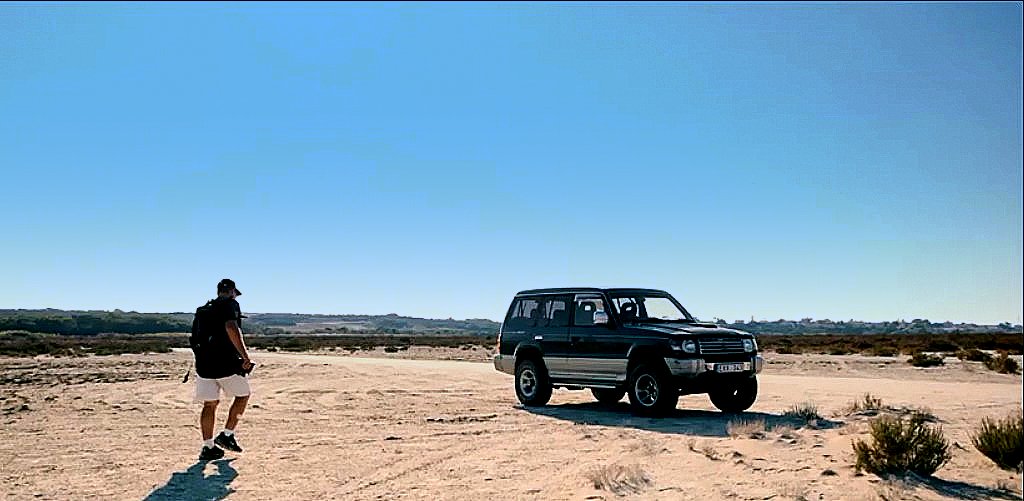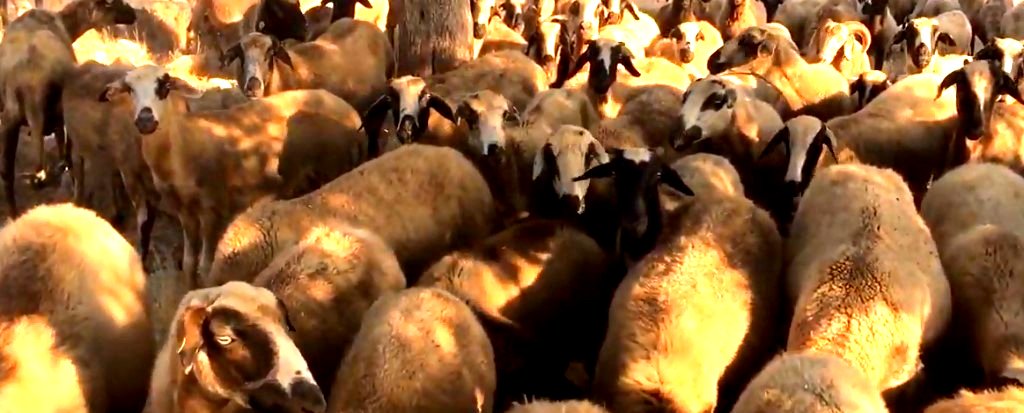Did you ever have a bad day? I mean, a really, really bad day? In western Cyprus, one particular September day turned out to be not only bad but could have been fatal…except for a bit of luck and happenstance. Here’s the true story of a lifesaving tomb rescue from a prehistoric necropolis.
There are good days and bad days when you combine being a trained archaeologist and professional tour guide. I’ve had my share of both on digs and tours of treasures found in western Cyprus. From the 1970s for 30-plus years, most of my work involved digging Bronze Age chamber tombs as part of a strong team from British and Cypriot institutions. These were exciting times and certainly count as my good days, especially when our efforts uncovered rare “finds”.
Most of these tomb excavations were “rescue digs,” where roads were being cut across virgin landscape, exposing ancient burials in the road-line; or new buildings were going up and the building works would truncate the top portions of tombs; or in a few cases in the mid-1980s, the installation of telephone lines along narrow village streets struck ancient tombs.
We had to work to tight schedules as the Greek part of the divided Cyprus was modernising after the hiatus caused by the Turkish invasion of 1974. It was definitely a bad day when we had to quit an interesting site with some parts not fully investigated.

I now share my experiences of the archaeological wonders of the Paphos area of Cyprus with the increasing numbers of international tourists deciding to ditch their sunbeds for a unique and exciting single-day excursion. We offer adventures aimed at the serious traveller who seeks that “extra special something” to enhance the texture of their holiday in Cyprus.
If tourists seek an eye-opening experience, a less conventional and more environmentally friendly approach to discovering the history, culture and natural landscapes of the island, then we will open up all the right doors, push all the correct buttons.
That is how, in September 2018, I came to meet Sally Miniel and Joe Lamm from Texas, USA and guide them on a full-day Private Excursion. The tour was aimed at mainstream and off-the-beaten-track archaeological sites in western Cyprus. This was a day I shall not easily forget because one of the most unusual experiences I’ve ever had, either as an archaeologist or a professional tour guide, occurred about mid-way through the excursion.
Right place for a lifesaving tomb rescue
We had just finished visiting a rather unique 14th Century painted church located down some isolated dirt track, miles from anywhere, when Joe Lamm, happened to mention that he was interested in prehistoric archaeological sites. I told him: “You’re in luck because nearby there happens to be an excellent example of a Chalcolithic Period (ca. 3000BC) necropolis (burial ground), where dozens of shaft graves were cut into a soft limestone outcrop. It’s only a ten-minute drive from where we are now.”
So, that’s how it all started…a sudden last-minute decision. We diverted from our planned itinerary to include this special site. Under normal circumstances, we would not have visited this place on that day, but on these Private Excursions spontaneity rules. We ended up in the right place at the right time to bring about a lifesaving tomb rescue.
“All around us are tombs of people who died five-thousand years ago, and then suddenly a loud sound attacks our ears from below the ground! You might guess where your wild thoughts might take you…we are all stunned.”
David Pearlman, archaeologist and professional tour guide
When we approached the site by our 4×4 vehicle and then got out to walk the last section up to the tombs, I noticed a large flock of sheep and goats milling around nearby. I didn’t think too much about that initially. As I brought these two Texas guests up to the rock outcrop, I started to explain about burial practices and point out the shaft graves
Suddenly there was an unexpected interruption. We were all stunned –shocked, really – to hear the loud noise, as if it was coming from underground, definitely sub-terra. Consider the context and setting of this specific moment:
Here we are standing on top of a prehistoric cemetery, a burial ground. All around us are tombs of people who died five-thousand years ago, and then suddenly a loud sound attacks our ears from below the ground! You might guess where your wild thoughts might take you, before logic sets in and you realize it’s the sound of a living animal.
We started to frantically search for the source of the noise by checking inside each of the many dozens of holes and then, three or four minutes later: there it was!
An adult sheep had fallen into one of the deeper graves. It was undeniably trapped inside. There was no way this animal could move in any direction and it could not get out of the hole by itself. Beyond that, it was so deeply stuck – something like two metres below surface level – and beyond our reach. None of us possessed the physical resources necessary to pull the sheep up and liberate the poor creature by ourselves.
I told my esteemed guests, Joe and Sally, that I knew they were paying top dollar for the tour day. But I would forfeit all the money if necessary to get help to pull the poor bugger out. I thought I won’t be able to live with myself if I abandon this sheep in the catacomb hole.








Tomb rescue gallery
Of course, Joe and Sally were 100% on board and felt just as strongly for a rescue mission. In full agreement, we stopped our tour and returned to the nearby Kouklia Village to seek help. First stop was the local museum, but unfortunately, they were unable to give immediate assistance, so we moved on.
Then we went to a nearby police station, but our pleas for help were met with expressions of indifference and nobody seemed particularly interested to get involved. I thought: Where is the love? Is there no heart left in a place that overlies the Sanctuary of Aphrodite, the ancient Goddess of Love?
However, I was wrong: There is heart, there is compassion in Kouklia Village, and we were soon to find it along one of the village side streets. I remembered the name of a sheep/goat farmer – a really nice guy named Aspris – who keeps most of his animals in the abandoned Souskiou Village, quite near the ancient necropolis where the sheep was stuck. I was not 100% sure the poor sheep in question was his, but it was a start, so I went driving through the village to find somebody who could point us to the house of Aspris.
Along the way, I found a pick-up truck with a driver inside, window open, chatting with another villager. On the side door of the pick-up was the logo and lettering of the Village Council of Kouklia. Bingo! The driver was a bearded fellow in his late 20s, maybe early 30s. We showed him the photos of the trapped sheep that Sally had just taken on her phone.
Mid-way through the conversation he interrupted me, asking: “Hey: Aren’t you David, the archaeologist?” I said: “Yeah, that’s right, but how do you know me?” He explained that his name was Spyros Petridesand when he was a young kid he and his mates used to hang out at the village Demotic School, where we archaeologists were staying. We had played football together, back in the old days. I really had no memory of this or this even this specific kid, now a grown man. I pretended to remember and went: “Oh, yeah, of course; Spyros. I remember you now.”
Organised a rescue party
Spyros took total control of the tomb rescue situation. He organised a rescue party. He told me to wait five minutes and then he would come back and follow us to the necropolis site. Spyros went into his office first and produced a few bottles of cold water, which he offered us as refreshment. You see, in Kouklia Village, no matter what happens, the guests are King, so philoxenia (“hospitality”) is always offered.
Our new animal rescue leader disappeared for a short time, maybe 4 minutes, whilst we drank the cold water. (It was a hot day, and we were indeed thirsty.) He then reappeared with two of his pals, one of them carrying a rope. As promised, he followed behind us as we drove back to the necropolis site.
We all expected that when we re-located the trapped sheep, one of these strong guys would climb down and attach the rope to the trapped animal. However, as soon as we arrived at the outcrop and found the sheep stuck in the hole, the rope became immediately irrelevant. We all marvelled as one of Spyros’ mates, some giant guy named Yiorkis with huge forearms, just bent down (exposing his massive “cheeks” and “crack” flowing over his underwear in the process) and simply grabbed the sheep by its fleece – you know, kind of the way you pick up a cat by its neck — and yanked the poor animal out of the hole!
Mission accomplished! We all gave the Spyros-Yiorkis team rousing applause as we watched the now free sheep high tail it down the dirt track to join the rest of his flock. Great story, all true! Another good day chalked-up.
UPDATE
When I look back on it, I recognize it was a completely accidental and spontaneous experience. It sure worked out well for the unfortunate sheep that fell into the tomb that day, because it was just by chance that brought us to the site that day.
I also see how fantastic and empathetic the Cypriot people generally, and the inhabitants of Kouklia Village specifically, can be, even in these modern times. Spyros and his assistant Yiorkis showed great determination and genuine compassion to help a fellow living creature of this Earth get out of a bad situation that day. To all of us who witnessed the events described above, these two gentlemen stand out as true Cypriot heroes…
Al-Hassad all stories about your ancestors are welcomed ancestor true story ancestry stories ancestry true story ancestry writing Anthropological linguists aramaic outpost as are those of today’s generation. Soon enough Bahia Blanca bar brawl bologna cabaret ceramic tiles Damascus Dilys Powell England family history family search haunted Berengaria heritage blog heritage stories invasion King Farouk King Richard Ledra Palace leigh on sea Maaloula Makarius mel gibson passion new authors Ordinary families have achievements Osborne family perfect storm Pinewood Valley publish free secret agent steve jobs strike-bound thames smugglers tourism traditions and golden moments. There have been times when things have gone wrong and progress held on hold. Here Troodos warrior queen Winston Churchill

Recent Comments